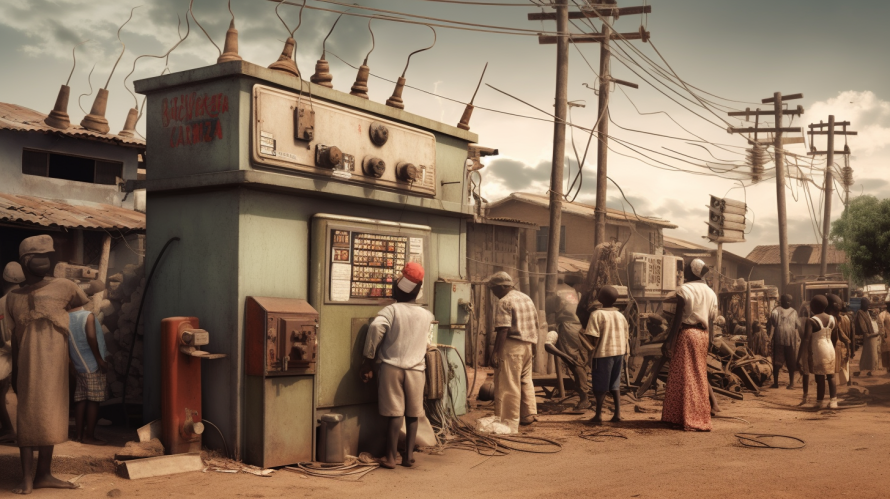
South Africa’s power supply system is managed by Eskom, the state-owned electricity company. Eskom has been struggling to keep up with the country’s demand for electricity, resulting in a severe shortage of power supply in recent years. This shortage has led to regular power outages, known as load shedding, which have disrupted businesses, industries, and households across the country. In this essay, we will discuss how Eskom’s shortage of power supply affects the economy of South Africa, highlighting its key features, causes, and potential solutions.
Key Features of Power Supply Shortage
The key features of a power supply shortage include the following:
- Power Outages: A power supply shortage results in power outages, which can last for several hours or even days. These outages disrupt businesses, industries, and households across the country, causing significant economic losses.
- Reduced Productivity: Power outages lead to reduced productivity in businesses and industries, as they cannot operate without a reliable source of electricity. This leads to delays in production, loss of revenue, and increased costs.
- Increased Costs: Power outages lead to increased costs for businesses and households, as they need to invest in backup generators or other forms of alternative energy sources. This puts additional financial strain on already struggling businesses and households.
- Negative Impact on Investment: A power supply shortage can have a negative impact on foreign investment in the country, as investors may be deterred by the instability of the power supply. This can lead to a decline in economic growth and job creation.
Causes of Power Supply Shortage
The causes of the power supply shortage in South Africa are complex and multifaceted, but can be summarized as follows:
- Underinvestment in Infrastructure: The power supply infrastructure in South Africa is outdated and in need of significant investment. However, the government has been slow to invest in the necessary upgrades, resulting in a system that is unable to keep up with growing demand.
- Aging Power Plants: Many of South Africa’s power plants are old and in need of maintenance and upgrades. This has resulted in frequent breakdowns and reduced capacity, leading to a shortage of power supply.
- Dependence on Coal: South Africa relies heavily on coal for its power supply, which is a finite resource and highly polluting. This has resulted in environmental concerns and pressure to transition to more sustainable energy sources.
- Corruption and Mismanagement: Corruption and mismanagement in the power sector have contributed to the inefficiency and instability of the power supply. This has led to a lack of accountability and a failure to invest in the necessary upgrades.
Impact of Power Supply Shortage on the Economy
The shortage of power supply has had a significant impact on the economy of South Africa, including:
- Reduced Economic Growth: The power supply shortage has resulted in reduced economic growth, as businesses and industries struggle to maintain their operations. This has led to a decline in job creation and an increase in unemployment.
- Increased Costs for Businesses: The power supply shortage has led to increased costs for businesses, as they need to invest in backup generators or other forms of alternative energy sources. This puts additional financial strain on already struggling businesses.
- Disruption of Supply Chains: The power supply shortage has disrupted supply chains, as businesses are unable to receive and transport goods due to power outages. This has resulted in delays and additional costs for businesses.
- Decline in Foreign Investment: The power supply shortage has led to a decline in foreign investment, as investors are deterred by the instability of the power supply. This has led to a decline in economic growth and job creation.
Potential Solutions to Power Supply Shortage
There are several potential solutions to the power supply shortage in South Africa, including:
- Investment in Infrastructure: The government needs to invest in the necessary upgrades to the power supply infrastructure, including the construction of new power plants and the modernization of existing ones. This will require significant financial investment and political will but is necessary for a stable and reliable power supply.
- Diversification of Energy Sources: South Africa needs to diversify its energy sources to reduce its dependence on coal and transition to more sustainable energy sources, such as wind, solar, and hydropower. This will require significant investment and long-term planning, but will ultimately lead to a more stable and sustainable power supply.
- Improved Governance and Accountability: Corruption and mismanagement in the power sector need to be addressed through improved governance and accountability. This will require stronger regulation and oversight of the power sector, as well as increased transparency and accountability in decision-making processes.
- Demand-Side Management: South Africa needs to implement demand-side management measures to reduce peak demand and improve energy efficiency. This includes measures such as time-of-use tariffs, energy efficiency programs, and the use of smart grid technologies.
Conclusion
In conclusion, the shortage of power supply in South Africa has had a significant impact on the country’s economy, including reduced economic growth, increased costs for businesses, disruption of supply chains, and a decline in foreign investment. The causes of the shortage are complex and multifaceted, including underinvestment in infrastructure, aging power plants, dependence on coal, and corruption and mismanagement in the power sector. However, there are potential solutions to address these issues, including investment in infrastructure, diversification of energy sources, improved governance and accountability, and demand-side management. It is essential for the government and stakeholders in the power sector to work together to implement these solutions and ensure a stable and reliable power supply for the country’s future economic growth and development.
